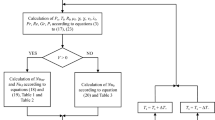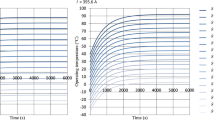Summary
Overhead lines are essential components of high voltage power systems worldwide. The performance of this network element is important for a save and reliable transmission of electrical energy. The load capability of a line is related basically to the line design itself and takes centre stage of the economic operation whereas the sag behaviour and the technical condition of the conductor and their components are more related to the line and network safety. Based on this situation overhead line monitoring systems are actually under discussion in many committees worldwide. This auxiliary equipment for overhead power lines helps to evaluate the actual transfer capability and/or to increase the system reliability. Therefore, a number of systems using different measuring methods and monitoring techniques are available on the market. More or less all methods are based on physical data and process information to achieve a suitable output to control the line stress. One of these methods is called the Weather Parameter Method, which uses local metrological weather data and system load information to estimate the conductor temperature. In a research project running over years an overhead line monitoring system was set up in cooperation with the Austrian transmission utility APG. After these years of experience a number of information and data based on the principle of the Weather Parameter Method is available and gives the scientific basement for this contribution. Three observation stations are collecting data all over the year; two stations are at a 220 kV overhead line and one station at the open air test field of the IHS in Graz in use. This contribution focuses on the coherences of the different parameters collected for the evaluation of the conductor temperature and it is not the main goal to discuss the improved performance by using a thermal management system, as mentioned in many other papers. By the knowledge of the punch-through of significant parameters in combination with the appearance probability a more accurate scheduling of the utilisation of the line under observation will be possible. A well prepared processing of many significant parameters for an overhead line monitoring system and a scientific approach based on some years of practical experience is presented in this contribution.
Similar content being viewed by others
References
Cigre (1992): The Thermal Behaviour of Overhead Conductors. CIGRE WG12, ELECTRA No. 144
IEEE Std. 738-1993: IEEE standard for calculating the current-temperature relationship of bare overhead conductors; non metric units
IEEE Std. 738-2006: IEEE Standard for Calculating the Current-Temperature of Bare Overhead Conductors; MKSA/SI units
Muhr, M., Pack, S., Jaufer, S. (2007): Overhead line measurements and monitoring for increasing system reliability. Transient Phenomena in Large Electric Power Systems, Cigre Symposium Zagreb, Croatia, April 18–21, 2007
ÖVE/ÖNORM EN 50341:2002-09-01: Freileitungen über AC 45 kV
Author information
Authors and Affiliations
Rights and permissions
About this article
Cite this article
Muhr, M., Pack, S., Jaufer, S. et al. Experiences with the Weather Parameter Method for the use in overhead line monitoring systems. Elektrotech. Inftech. 125, 444–447 (2008). https://doi.org/10.1007/s00502-008-0597-x
Issue Date:
DOI: https://doi.org/10.1007/s00502-008-0597-x




